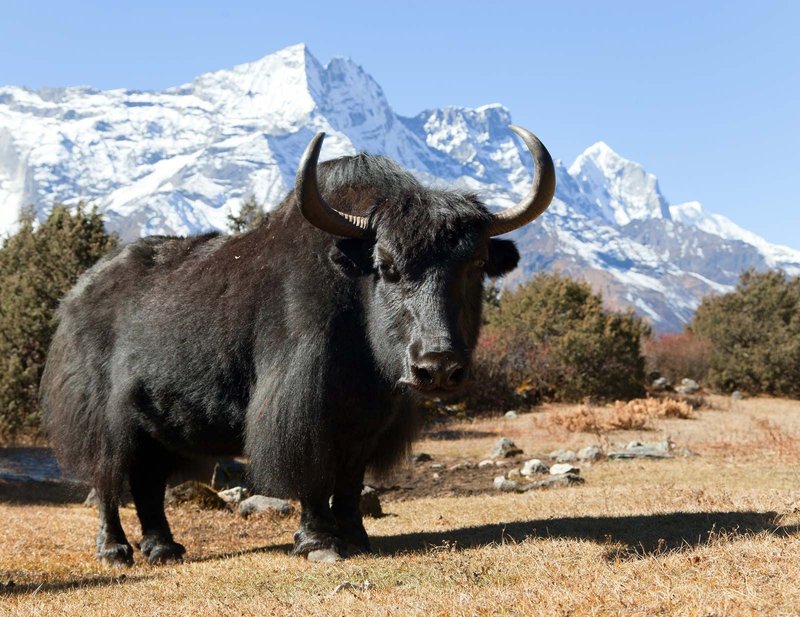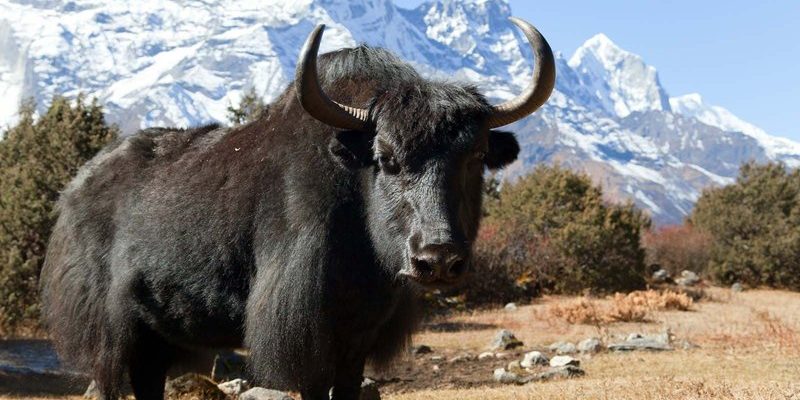
Imagine having a friend who’s not only reliable but also a little mysterious. That’s what the yak is like in the cultural context. People rely on yaks for their strength and resilience, but they also weave them into stories and traditions that resonate on a deeper level. Let’s dive into how this magnificent animal is portrayed in various cultures and what it means to people who share their lives with them.
Yak Symbolism in Tibetan Buddhism
In Tibetan Buddhism, the yak is often viewed as a **sacred animal**. It represents strength and endurance, and its presence in spiritual practices is significant. The high-altitude regions of Tibet have long relied on yaks for their livelihood, acting as companions on tough terrains. This reliance has fostered a spiritual connection that goes beyond mere utility.
You might be wondering how exactly yaks fit into Buddhist practices. Let me explain: they are sometimes used as offerings during important ceremonies. For instance, a yak could be sacrificed to honor deities or to seek blessings for a successful harvest. In these instances, the yak becomes a vital part of the community’s spiritual fabric.
This connection doesn’t just end with rituals. The yak features prominently in Tibetan art and literature, serving as a **symbol of resilience**. Many Buddhist paintings depict yaks alongside gods and other divine beings, emphasizing their revered status. This showcases the yak not just as a physical presence but also as a spiritual metaphor for perseverance in the face of adversity.
The Yak in Mongolian Culture
Heading over to Mongolia, the yak, known as the *zud*, also plays an important role. Imagine vast steppes where nomadic families rely on these hardy creatures for transportation and milk. In Mongolian culture, yaks are indicators of wealth and prosperity. Families with many yaks are typically seen as more affluent, giving them social status in a society that values **animal husbandry**.
Mongolians have a rich tradition of stories and folklore surrounding the yak. One popular tale involves a yak saving a family’s life by guiding them through a treacherous storm. This narrative emphasizes not just the yak’s practicality but its heroism and loyalty. You can see how the yak becomes more than just an animal; it’s a trusted friend and protector in the harsh realities of nomadic life.
Furthermore, the yak is celebrated in various festivals, where competitions featuring skilled riding and herding take place. These events not only honor the yak but strengthen community ties among herders. It’s a beautiful blend of culture and practicality that showcases the deep respect Mongolians have for this remarkable beast.
Folklore Tales Featuring Yaks
Many cultures have woven yaks into their folklore, creating a tapestry of stories that highlight their unique qualities. For instance, in Himalayan folklore, there’s a story about a magical yak that could fly over mountains. This fantastical element captivates audiences, especially children, and serves to create a sense of wonder.
These stories often highlight the yak’s **stubbornness** and **resourcefulness**. One tale might describe how a clever yak outsmarts a hunter or helps villagers find a lost pasture. Such narratives not only entertain but also instill values of cleverness and resilience in younger generations.
You might even come across mushier tales that personify yaks, giving them human emotions and traits. This adds another layer to their cultural representation, as yaks become vessels for human characteristics—sometimes wise, other times mischievous. The stories help people connect with nature and appreciate the yaks that share their environment.
The Economic Role of Yaks
Beyond folklore and spirituality, yaks play an essential economic role in the communities that rely on them. In many Himalayan and Mongolian societies, yaks are pivotal for their **milk**, **meat**, and **fur**. Yak milk is especially nutritious, often turned into dairy products like butter and cheese, which are staples in various diets.
You may not realize it, but yaks also contribute to sustainable agriculture. Their dung can be used as fuel or fertilizer, making them a versatile asset to families living in rugged terrains. With climate change affecting food security, yaks can offer not just sustenance but also a way to sustainably manage resources.
Moreover, yaks are increasingly becoming part of eco-tourism. People travel to witness these magnificent creatures in their natural habitat, providing local communities with additional income. This shift helps to preserve yak populations and their habitats while promoting cultural appreciation.
Cultural Festivals Celebrating the Yak
Yaks are celebrated in numerous **festivals**, especially in regions where they hold great importance. One of the most famous is the “Yak Festival” held in various parts of Tibet and Mongolia, where people come together to honor this noble animal. Picture a colorful gathering filled with traditional music, dances, and even yak races!
During these festivals, you’ll find various competitions that showcase the skills of herders and their yaks. There might be events where participants demonstrate their ability to navigate obstacles with their yaks, highlighting the animal’s training and bond with its handler. It’s a fascinating way to witness how integral yaks are to the local culture.
These gatherings aren’t just about individual competitions; they also strengthen community bonds. Families come together to share stories, enjoy traditional food, and engage in friendly rivalry. It’s a celebration of both the yak and the cultural heritage that it embodies, reminding everyone of the interconnectedness between humans and animals.
Modern Interpretations of the Yak
In today’s world, the yak is starting to gain popularity beyond its traditional roles. With the rise of social media, you’ll find adorable yak videos going viral. They’re shown frolicking in the snow or adorably chewing grass, showcasing their quirky personalities. This new fascination is helping to broaden their appeal globally.
Interestingly, the yak is also being embraced by environmentalists. As people become more aware of climate change, yaks are often highlighted as sustainable alternatives to cattle. Their unique digestive systems allow them to thrive on tough grasses and shrubs, making them valuable in regions where other livestock might struggle.
Moreover, modern fashion has also taken a liking to yak wool. High-quality, soft yak wool is being used in clothing and accessories, merging traditional practices with contemporary style. This trend not only celebrates the yak but supports the communities that depend on them, ensuring that their cultural significance continues to be respected.
The yak is more than just a sturdy animal roaming the rugged landscapes of Asia. It serves as a powerful symbol in various cultures, embodying resilience, loyalty, and community spirit. From Tibetan spirituality to Mongolian folklore, the yak has captured human imagination in ways that highlight our connections to the natural world.
Whether it’s through mythical tales, economic importance, or modern-day celebrations, the yak remains a vital part of the collective cultural fabric. So, the next time you see a yak, remember—it’s not just a creature; it’s a living canvas of stories, traditions, and life lessons that span generations. Let’s appreciate the yak, not just for what it is but for what it represents in our shared human experience.

